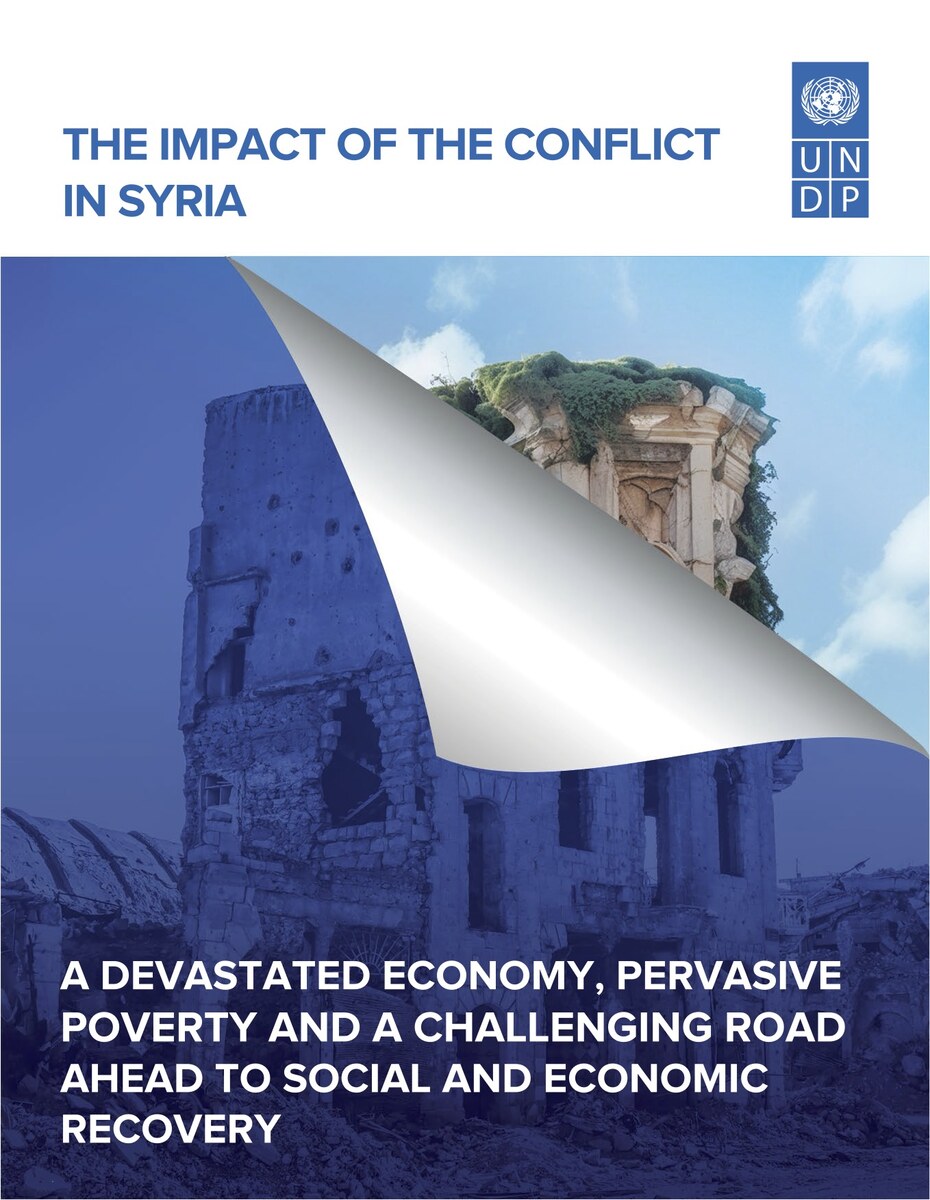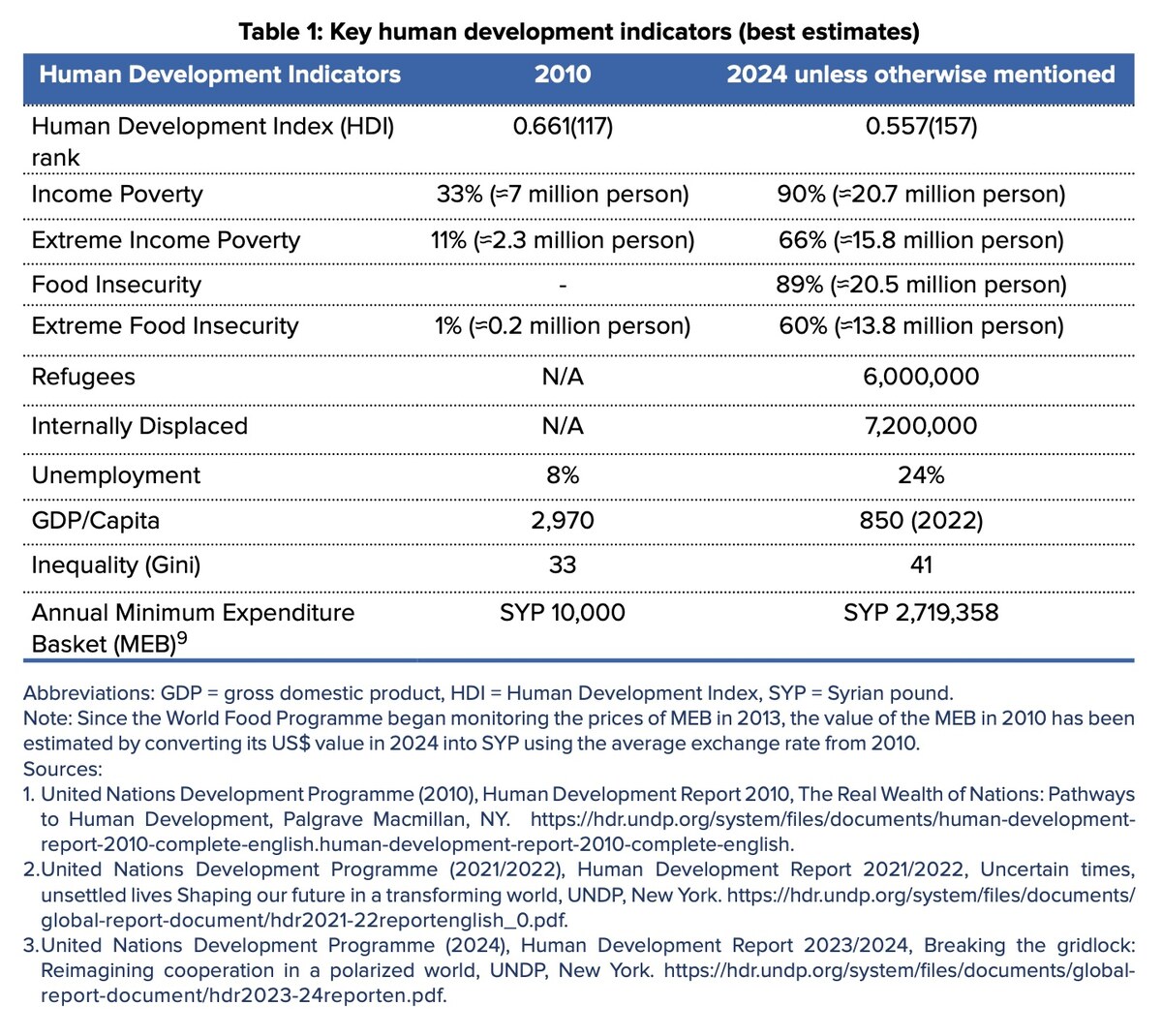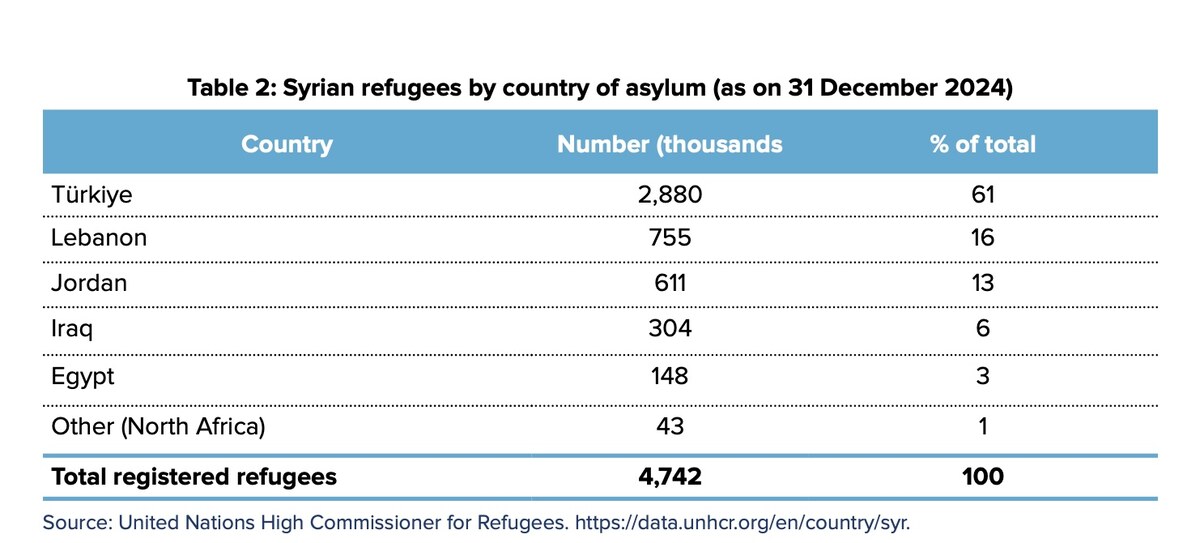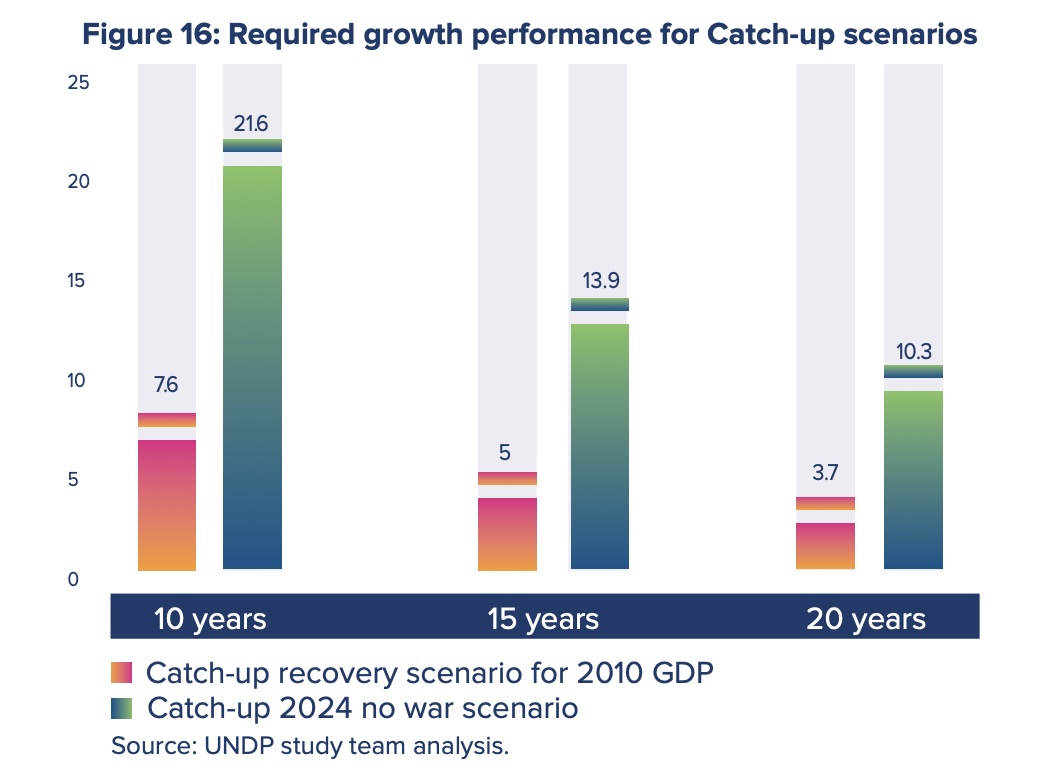NEW YORK CITY: A newly published report from the UN Development Programme warned that at current growth rates, the Syrian economy will not recover to prewar levels until 2080, leaving the country stuck in a state of prolonged hardship and instability.
It also underscored the urgent need for a rapid economic recovery to help reverse the decades of progress that were lost as a result of the 14-year civil war. The conflict shattered nearly four decades of economic, social and human development, causing irreparable damage to the nation’s infrastructure, economy and social fabric.
The report, titled “The Impact of the Conflict in Syria: A Devastated Economy, Pervasive Poverty, and a Challenging Road Ahead to Social and Economic Recovery,” offers a detailed analysis of the socioeconomic state of the country, and outlines a road map for rebuilding its economy and infrastructure.

According to the UNDP’s preliminary socioeconomic impact assessment, gross domestic product in Syria has halved since the war began in 2011, representing a loss of $800 billion over the past 14 years.
Poverty has reached alarming levels, with the national poverty rate soaring from 33 percent before the war to 90 percent. Extreme poverty has also skyrocketed, with 66 percent of the population now affected, up from just 11 percent prior to the conflict. Three out of four people in the country rely on humanitarian aid and are in urgent need of support for critical aspects of life such as healthcare, education, employment, food security and housing. The country also has one of the highest unemployment rates in the world, with one in four Syrians jobless.
Achim Steiner, the administrator of UNDP, said that the requirements for Syria’s recovery extend beyond the immediate need for humanitarian aid.
“Restoring productivity for jobs and poverty relief, revitalizing agriculture for food security, and rebuilding infrastructure for essential services such as healthcare, education and energy are key to a self-sustaining future, prosperity and peace,” he said.

The damage to Syria’s infrastructure, which has left many essential services nonfunctional, is among the primary obstacles to recovery. The report highlights a staggering array of damage: nearly 50 percent of schools are closed, one-in-three housing units have been destroyed, and nearly half of the nation’s water-treatment plants and sewage systems are no longer operational. Energy production has plummeted by 80 percent, with power plants and transmission lines heavily damaged. These failures in basic services exacerbate poverty levels and block any meaningful path toward recovery.
The UNDP report also highlighted the devastating loss of life during the war, and the decline in health infrastructure. Nearly 618,000 Syrians died during the conflict, and 113,000 were forcibly disappeared, their whereabouts still unknown. Meanwhile, the collapse of the healthcare system has exacerbated the crisis; a third of all medical facilities have been damaged and almost half of ambulance services are no longer operational.
The education sector was also hit hard, leaving 40-50 percent of children between the ages of 6 and 15 unable to attend school. The widespread destruction of housing has left 5.7 million people in need of shelter support.

Essential infrastructure, including water-treatment plants, sewer systems and power plants, has been severely damaged, leaving millions without access to clean water, sanitation or reliable energy supplies.
Syria’s position on the Human Development Index has plummeted to its lowest point since 1990, further illustrating the catastrophic effects of the war on the nation’s development.
The economic outlook remains grim but hope can be found in the potential for robust growth if the correct strategies are implemented, the UNDP said. Its report calls for an ambitious approach to development, as growth rates will need to increase sixfold if they are to recover within a decade.
At the current rate of annual growth, 1.3 percent, it would take more than 50 years to restore GDP to prewar levels. To recover within 15 years, Syria would need to achieve a growth rate of 5 percent, and a tenfold increase in growth would be required for the country to reach the level of development it could have attained in the absence of the war.

Abdallah Al-Dardari, UNDP’s assistant administrator and director of its regional bureau for Arab states, stressed the important need for comprehensive reforms, and said: “Syria’s future hinges on a robust development-recovery approach.
“This demands a comprehensive strategy addressing governance reform, economic stabilization, sector revitalization, infrastructure rebuilding, and strengthened social services.”
He told Arab News that this strategy for recovery will rely on investments and on good management of those investments, as he underscored the institutional requirements Syria will need to meet to attract private investment in infrastructure.
“If you want to invest $100million or $200 million in (a) highway, you need to first of all be sure that you can go to the court, and the court will treat you equally if you have a litigation with your counterpart, which is the government,” Al-Dardari said.
“You need to make sure that there are internationally recognized arbitration systems. You need to make sure that your money can come in and leave the country. You need to make sure that your banking system respects the highest standards of banking.
“I can give you a very long list of things that need to be done and are not there yet. So this is an arduous journey. This is not an easy journey.”
Al-Dardari also told Arab News about the effects of international sanctions, imposed on the Assad regime during the war, on the economy and the ways in which they are hampering recovery progress.
“I'll give you an example,” he said. “Who is going to bring those investments of $36 billion while they are not really sure that the banking sector is free to bring in money, to use the SWIFT (banking system) to transfer funds and to invest?
“How do you make sure that your shipments into Syria of raw materials or semi-manufactured products are protected? How do you make sure that your exports from Syria can arrive at their destinations, and money will be paid for those exports?
“So at every step of the way in recovery, sanctions will play a role. The chilling effect of sanctions, what we call the ‘overload lines,’ will accompany those sanctions. So our core message (to countries) here is: Please understand the impact of sanctions and act accordingly.”
































